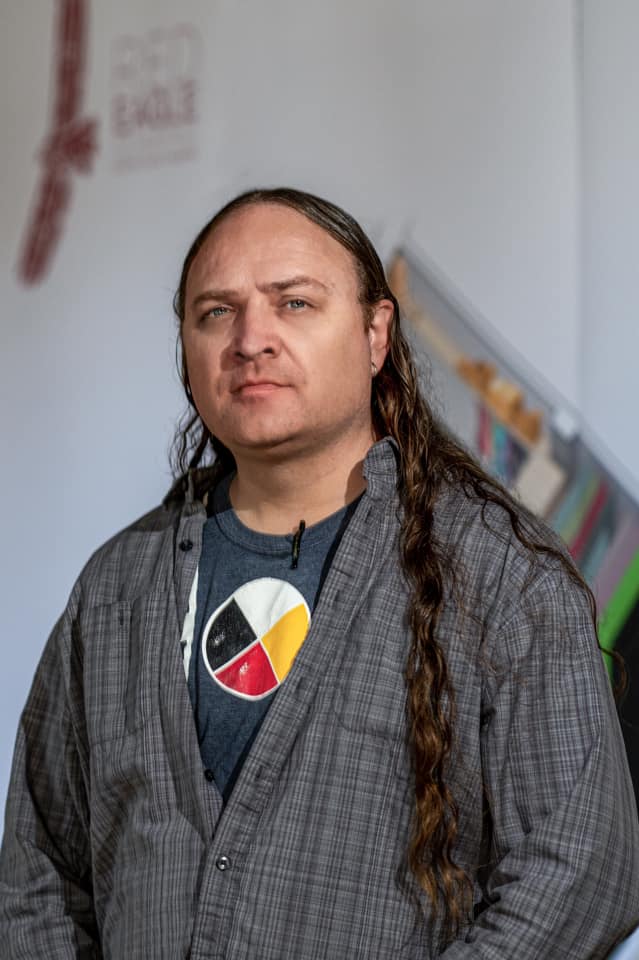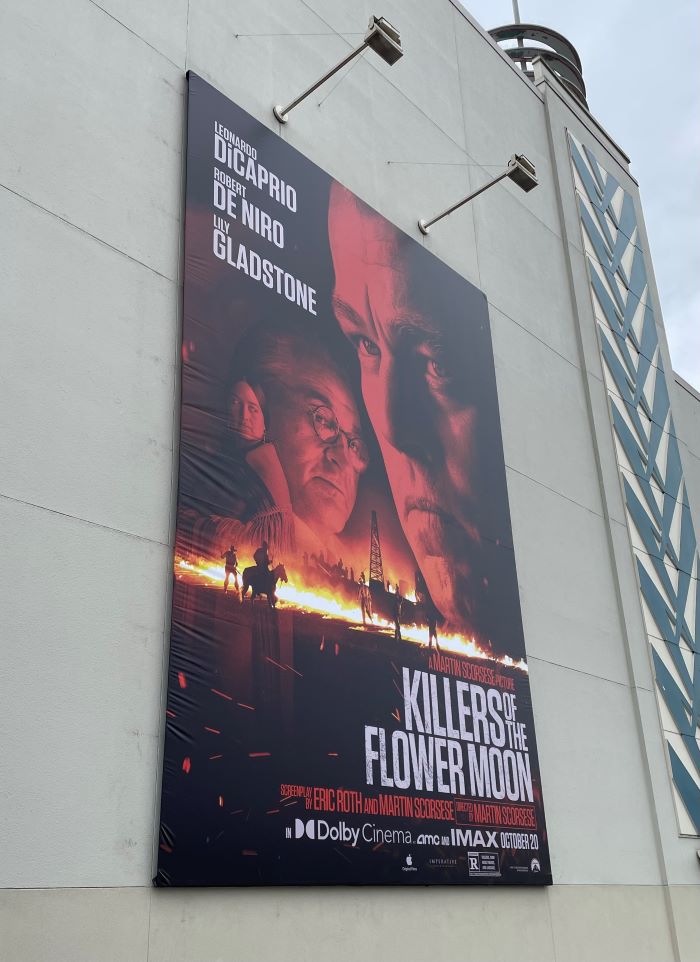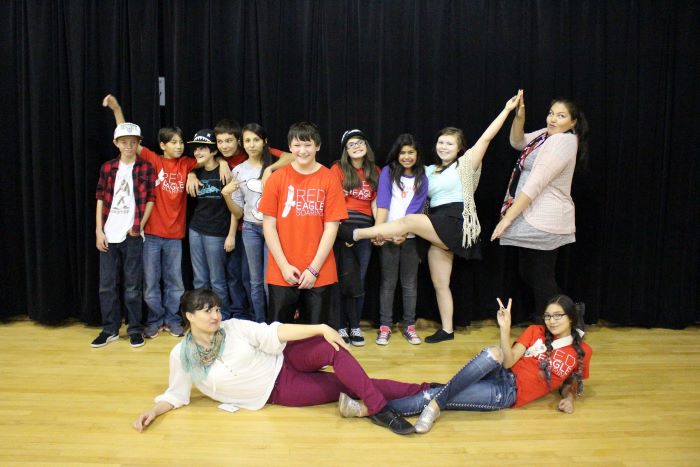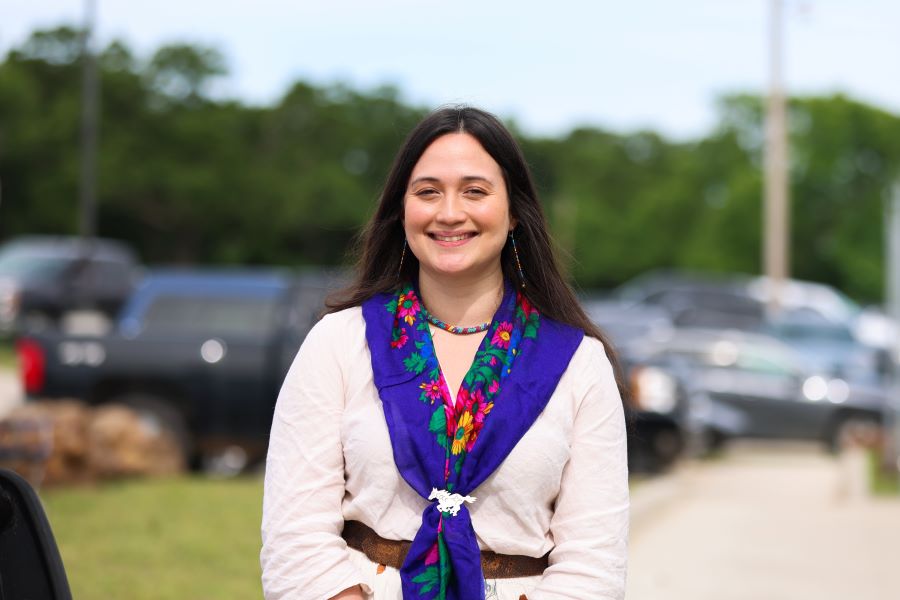Martin Scorsese film stars Red Eagle Soaring Teaching Artist
Russell Brooks of Red Eagle Soaring, a Seattle-based Indigenous youth theater company, is quick to point out that Indigenous people are the “original artists and storytellers of the continent.” That’s why it seems a bit odd that America’s motion picture industry rarely brings stories about Indigenous people to the big screen
Quick: What was the last major motion picture you saw that featured an Indigenous storyline? There have been a scant few during the last 50 years, including “Billy Jack” (1970), “Dances With Wolves” (1990), “Geronimo: An American Legend” (1993), and “The Last of the Mohicans” (1992).
On October 20, Hollywood will bring the first Indigenous story to the box office in quite a while: “Killers of the Flower Moon,” a Martin Scorsese film about the killing of the Osage people in Oklahoma after oil was discovered on their land. The film stars Oscar winners Robert DeNiro and Leonardo DiCaprio as well as Indigenous actress Lily Gladstone (Blackfeet/Nimíipuu), who grew up in Montana, graduated from Mountlake High School, and has been a teaching artist at Red Eagle Soaring.
The film’s October 20 release has been eagerly anticipated by local Indigenous communities—including members of the Indigenous Communities Fund, which United Way of King County launched in 2020 to provide Indigenous communities with resources to address COVID-19’s impact.
The film will also hit the box office just prior to both National Native American Heritage Month (November) and Indigenous People’s Day (October 9). Both celebrations honor the culture and history of Indigenous people nationwide.
Indigenous People’s Day is observed on the second Monday in October to celebrate and honor the history, legacy, and cultures of America’s Indigenous people. President Joseph Biden signed a proclamation recognizing Indigenous People’s Day in 2021.
Jessica Juarez-Wagner of Potlatch Fund, an Indigenous Communities Fund member, said that some local communities plan to go to the theater as groups to see “Killers of the Flower Moon.” Brooks of Red Eagle Soaring (also an Indigenous Communities Fund member) said stories about Indigenous history are long overdue, and he lauds the work of Gladstone, whose previous work includes the 2022 film “The Unknown Country” (which she also co-wrote) and the Showtime TV series, “Billions” (2016-2023).
“Lily taught our summer Seattle Indigenous Youth Arts & Performance program in 2016 and, during the pandemic, she did a virtual acting workshop with our youth,” said Brooks, whose organization eagerly anticipates a debut of its own. Red Eagle Soaring will host the grand opening of its new location at Station Space inside King Street Station on November 11.
“She’s been acting for a number of years, and there’s definitely great press about her where the rest of the world is just getting to know who she is based on her being cast in this high-profile film,” Brooks added, “but for us within Seattle and the Red Eagle Soaring community, she’s been familiar to us for quite a number of years now.”
Brooks said there are many, many Indigenous stories that need to be told to mainstream audiences and that “Killers of the Flower Moon” is “another step in the trajectory of really bringing stories to light for the wider public that deal with the history of this country and with native history.”

“What happened with the murders in the early part of the century in the Osage community—that’s something that maybe not everybody has heard of, but I was aware of it,” Brooks added. “It’s kind of what happened with [Black Wall Street massacres] in Tulsa, OK around that time. For it to be portrayed in a blockbuster film that’s getting international notoriety just takes it to a whole new level of bringing that home to people.”
The film is based on the 2017 book, “Killers of the Flower Moon: The Osage Murders and the Birth of the FBI,” by American journalist David Grann. Brooks said that the film’s producers had meetings with the Osage people and learned firsthand about the accounts that inspired the book and film.
“That helped producers make a film that was more accurate to what historically took place,” Brooks said. “There are so many examples of stories that Hollywood takes and either romanticizes them in some way or gives a different perspective. To do justice to the community itself, in order to highlight that history through this, we are getting the most accurate story that can be told through a Hollywood lens, based on the level of inclusion and engagement they spent before turning on the cameras.”

While the motion picture industry has not offered many films with Indigenous storylines, both television and online streaming sites have been more forthcoming. Last year, Teen Vogue featured a story, highlighting 15 TV shows and movies to watch during November’s Native American Heritage Month. The list comprises shows produced since 2005 and includes “Reservation Dogs,” the half-hour FX comedy series about four Indigenous teens in rural Oklahoma.
Red Eagle Soaring has featured such art for more than 20 years. From October through the end of the year, the theater company is conducting its Fall and Winter Workshops that allow students to delve into short film projects, acting, and creative writing.
Red Eagle Soaring gives students the tutelage to hone their talents and pursue their passions, be it local playhouses or the big screen. “No matter what they do, they have an Indigenous story, an Indigenous perspective, simply because it comes through them, no matter what they decide to do,” said Brooks. Our Native people are constantly evolving and growing, taking on new media and ways of expressing art and adapting it to our own.”
“As we emerge and evolve into this new era, I’ve always told [Red Eagle Soaring] youth and alumni, ‘You don’t have to do the stereotypical Native role or just be cast into a Native role.’ We really want them to feel like they can go and do anything they want.
Russell Brooks, director of Red Eagle Soaring Indigenous youth theater company
Brooks added that “Killers of the Flower Moon” might be a backdrop to bringing to the screen stories known well within the Indigenous community but are virtually unknown outside of it—or those known to certain Indigenous communities but not known to others.

But Brooks added, “As we emerge and evolve into this new era, I’ve always told [Red Eagle Soaring] youth and alumni, ‘You don’t have to do the stereotypical Native role or just be cast into a Native role.’ We really want them to feel like they can go and do anything they want. They can audition for anything alongside anyone else. They bring Native stories and experiences and storytelling to audiences and the greater public just by way of who they are and being out there, being active, and following their own pathways.”


Comments